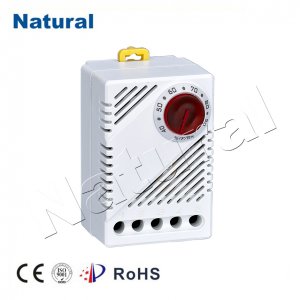In today’s fast-paced world, the pursuit of comfort and energy efficiency is more crucial than ever. Two unsung heroes in this quest are the thermostat and hygrostat. These devices play a pivotal role in regulating temperature and humidity, ensuring our homes and workplaces are not only cozy but also eco-friendly.

Thermostat: The Temperature Tamer The thermostat is a small, unassuming device that wields tremendous power in maintaining indoor temperature. Its primary function is to monitor the ambient temperature and adjust heating or cooling systems accordingly. This process not only keeps us comfortable but also plays a vital role in energy conservation. The basic concept of a thermostat is simple yet ingenious. It comprises a temperature sensor, a control unit, and an output mechanism. When the temperature deviates from the setpoint, the thermostat triggers the heating or cooling system to bring it back to the desired level. This automation saves energy by preventing unnecessary heating or cooling, making it a cornerstone of modern HVAC systems. Smart thermostats have taken this concept to new heights. These devices are equipped with advanced sensors, Wi-Fi connectivity, and machine learning algorithms that adapt to your schedule and preferences. They can be controlled remotely through smartphone apps, enabling you to optimize your home’s climate even when you’re away. Hygrostat: The Humidity Harmonizer While thermostats focus on temperature, hygrostats are dedicated to managing humidity levels. Humidity control is crucial for both comfort and health. High humidity can lead to mold growth and discomfort, while low humidity can cause dry skin and respiratory issues. A hygrostat operates on a similar principle to a thermostat but measures humidity instead. It uses a sensor to detect the relative humidity in the air and activates humidifiers or dehumidifiers to maintain optimal levels. This not only enhances comfort but also protects your home’s structure and your well-being. Much like thermostats, hygrostats have evolved with technological advancements. Modern hygrostats can integrate with HVAC systems to provide comprehensive climate control. Some even have features like automatic fan control to ensure balanced airflow, preventing moisture buildup in specific areas. Synergy in Comfort and Efficiency The true power of these devices lies in their synergy. When thermostats and hygrostats work together, they create an environment that is both comfortable and energy-efficient. For instance, in cold weather, a thermostat can keep the temperature steady, while a hygrostat ensures the humidity remains at an optimal level, preventing dryness and discomfort. This balance reduces the need for excessive heating, saving energy and money. Additionally, smart thermostats and hygrostats can collaborate seamlessly. They can communicate with each other to fine-tune climate control based on real-time data. For example, if the hygrostat detects high humidity, it can instruct the thermostat to lower the temperature slightly to maintain comfort without the need for additional cooling. The Future of Comfort and Efficiency As technology continues to advance, thermostats and hygrostats are likely to become even more sophisticated. Machine learning and artificial intelligence will enable these devices to adapt to our preferences and habits with unprecedented accuracy. They will also play a more significant role in energy conservation and sustainability, aligning with our increasing focus on eco-friendly living. In conclusion, the thermostat and hygrostat may appear inconspicuous, but their impact on our lives is profound. They are the silent guardians of our comfort and efficiency, ensuring that we can enjoy the perfect climate while minimizing our carbon footprint. As we look to the future, these humble devices will undoubtedly continue to play a pivotal role in making our homes and workplaces better places to live and work.